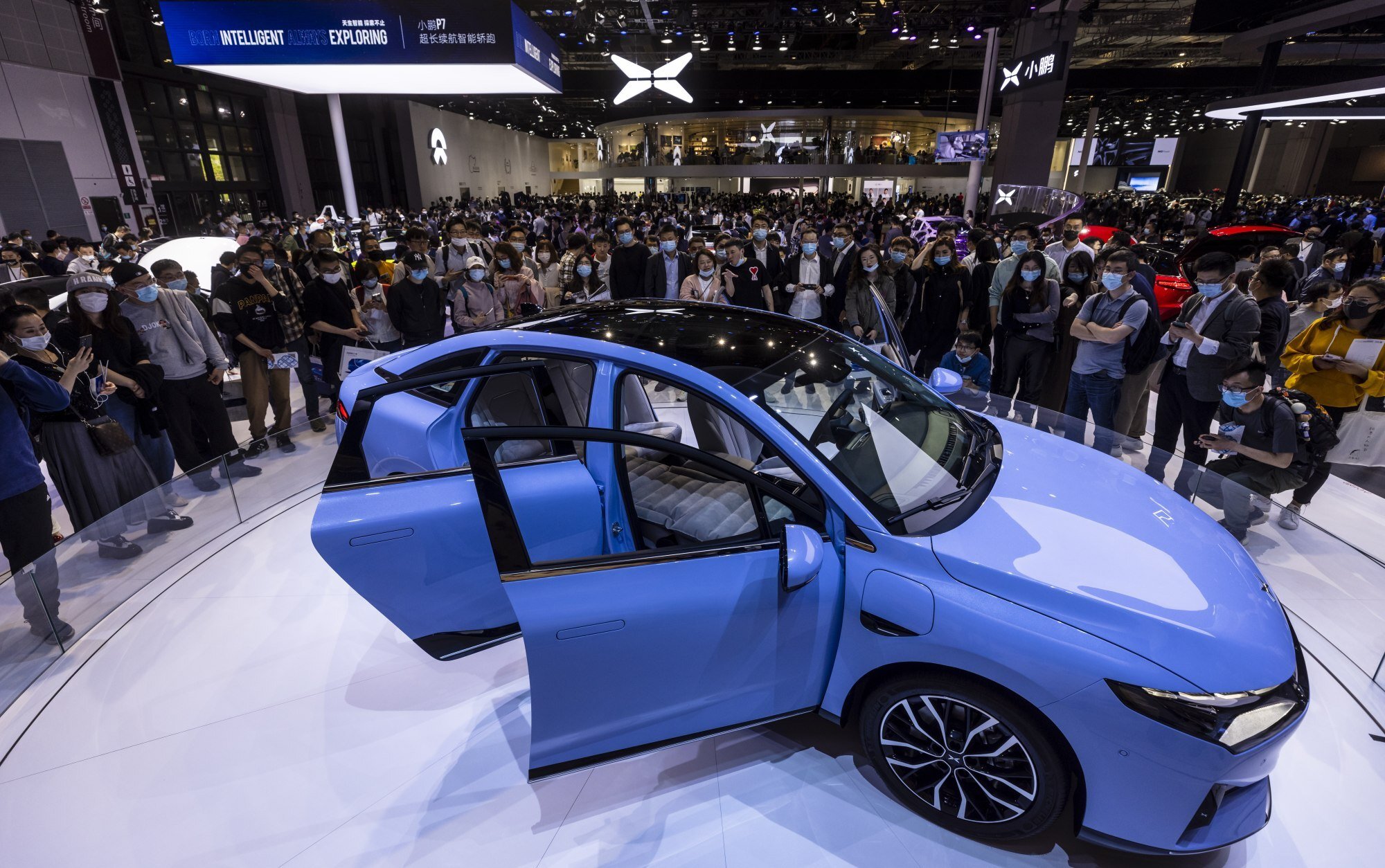
Chinese carmakers steal Tesla’s thunder at Shanghai Auto Show with compact EVs, 1,000km-range models
- SAIC-GM-Wuling’s two-seater convertible, and NIO’s luxury EV that can go as far as 1,000km (620 miles) on one charge wow visitors
- Protest by woman who jumped on Tesla’s Model 3 embarrasses US carmaker
Chinese carmakers and suppliers, from Tesla challengers such as Xpeng Motor and mainland’s largest home-grown automotive group SAIC Motor to telecoms equipment giant Huawei Technologies, showcased dozens of new models as well as technology such as lidar sensors and self-parking capabilities.

“We have not seen anything close to Tesla on the Chinese market yet,” said David Zhang, an analyst with the research centre for automobile industry innovation at the North China University of Technology.
“But the gap is expected to be narrowed as pressure is ratcheting up on Tesla bolstered by Chinese rivals’ enhanced manufacturing technique and their new models with much-improved performance.”
Tesla delivered 68,982 vehicles on the mainland in this year’s first quarter, representing 37.3 per cent of global sales in the same period. In March alone, its Shanghai-based Gigafactory 3 delivered 35,478 vehicles, more than double the 17,259 electric cars delivered by Tesla’s three New York-listed Chinese competitors NIO, Xpeng and Li Auto.
“To be fair, Model Y has every ingredient a high-performance EV should have and it is affordable to most of the urban middle-class consumers,” said Yale Zhang, managing director of Automotive Foresight, an industry researcher in Shanghai.
“Competition is heating up now because Chinese rivals are trying to launch new models with longer driving ranges and more sophisticated autonomous driving technologies.”

Some 1,000 assemblers and car component manufacturers took part in the nine-day car show, while 128 new cars made their global premiere, according to the organisers.
“A major change this year at the Shanghai Auto Show was that more traditional carmakers joined the electric car bandwagon,” said Paul Gong, analyst with UBS.
“They will become an important force in the sector as they can shift to mass production easily on the back of their existing production technology and they can do a better job at saving costs.”

The car is capable of level-3 autonomous driving, which allows drivers to safely take their attention off the road under certain conditions. It comes equipped with lidar, wave radars, cameras and ultrasonic radars.
Xpeng’s P5 uses lidar technology provided by drone maker DJI’s affiliate Livox.
The use of lidar by the Chinese players was seen as a statement against Elon Musk who said that lidar sensors are too expensive to be applied to smart EVs.
Galaxy Securities said in a research note last week that the price of lidar sensors on Arcfox’s Alpha S could be reduced to as low as US$200 a set.
“The cost of lidar technology at that level will make smart cars affordable and attractive to many Chinese car buyers,” said Zhang of North China University of Technology. “After all, lidar sensors largely improve performance and safety of autonomous driving.”


